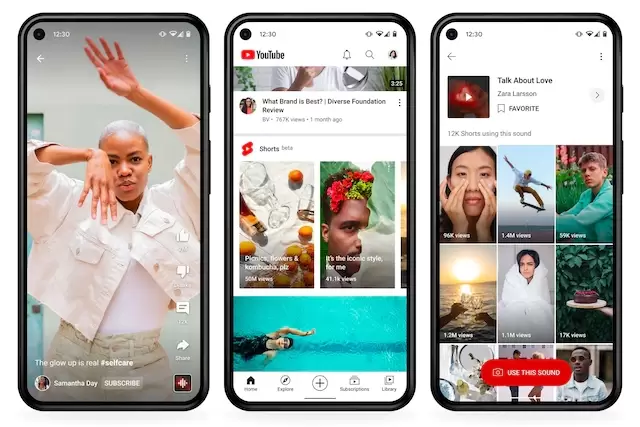Reels, Shorts and TikTok: how do Advertisers Divide Spend?
 “Instagram has gone from a connection-led platform, which people really valued it for, to now trying to be content-led, and that's led quite a few people to be unhappy about the changes,” adds Melles. “TikTok’s exponential growth happened in a large way during a time that we were all locked in our houses and people turned to new platforms for entertainment,” says Melless. The most obvious explanation for this is that TikTok has been around the longest and captures the highest share of user time. While this is far smaller than Google’s $210 billion and Meta’s $115 billion annual ad revenues, TikTok is commanding the highest share of budgets allocated specifically to short video, according to media buyers Campaign US spoke with. This headwind is costing Meta more than $500 million in lost revenue per quarter, while Shorts dragged YouTube’s ad revenue into the red in Q3, possibly for the first time. Post was created with the he lp of GSA Con tent G en erator D emoversion!
“Instagram has gone from a connection-led platform, which people really valued it for, to now trying to be content-led, and that's led quite a few people to be unhappy about the changes,” adds Melles. “TikTok’s exponential growth happened in a large way during a time that we were all locked in our houses and people turned to new platforms for entertainment,” says Melless. The most obvious explanation for this is that TikTok has been around the longest and captures the highest share of user time. While this is far smaller than Google’s $210 billion and Meta’s $115 billion annual ad revenues, TikTok is commanding the highest share of budgets allocated specifically to short video, according to media buyers Campaign US spoke with. This headwind is costing Meta more than $500 million in lost revenue per quarter, while Shorts dragged YouTube’s ad revenue into the red in Q3, possibly for the first time. Post was created with the he lp of GSA Con tent G en erator D emoversion!
YouTube is the most popular platform among kids aged 13 to 17, according to the Pew Research Center, while Instagram attracts a lower proportion (8.5%) of teens. But YouTube has the largest userbase of more than 2 billion monthly actives, compared to Instagram’s roughly 1.44 billion and TikTok’s 1 billion. TikTok was the fourth most downloaded non-gaming app worldwide in 2018. The COVID-19 pandemic further catalyzed growth, and by 2021 it had surpassed a billion users, with more than 100 million in the U.S. 2.1 billion to $5.96 billion, according to EMarketer and Insider Intelligence. Advertisers “take a more holistic approach” to advertising across Meta because Reels ads are one of 20 placements they can choose from, according to Erin Rogers, SVP of paid social at Reprise. The more time a user spends on a platform, the more ads they will be exposed to. This involves mapping out which platform has the highest share of specific audiences, as well as how those audiences spend their time. TikTok also commands the highest share of time spent, averaging 95 minutes per day in Q2 among global Android users - more than Facebook (49 minutes) and Instagram (51 minutes) combined. Until this year, we had brands tiptoeing and testing one campaign, but now we are seeing more brands adopt more of an evergreen presence which has led to increased investment,” she says.
“Right now everyone is redefining measurement and attribution models,” says Bangah. “There's been a significant shift towards TikTok for a lot of brands,” says Nikki Melless, media director at Byte/Dept. “Especially if it's a creator-led campaign, what we see a lot of is it'll spark on TikTok and the creators are chosen for their TikTok presence,” says Miller. This piece is part of a two-part series exploring the potential of short-form platforms video for creators and brands. As monetization lags at Reels and Shorts, Campaign US delves into the factors informing how ad spend flows between short video offerings from performance to audience, maturity and trust. Products like the Branded Hashtag Challenge and TopView, in which advertisers buy the first video users see when they open the app, represent new ways to “bring the community closer to brands,” Melles says. Variety allows advertisers to test and scale with relative ease, says Sam Baron, VP of media at Critical Mass. This allows our clients to test new ad formats and performance before investing in custom creative content for hyper-specific formats,” Baron says. Offering a variety of ad formats can work in a platform’s favor, especially for engaging core small to mid-sized advertisers.
TikTok has gained the trust of advertisers by investing in third-party measurement partnerships and adopting industry standards. Since it is easier to nurture an organic audience on TikTok than on other platforms, media buyers say, advertisers often create campaigns specifically for TikTok and then repurpose it for other platforms. Until recently, brand safety considerations would have elevated Instagram and YouTube, more established platforms, above TikTok. TikTok performs well because it has a higher index of Gen Z users than other platforms, according to media buyers. Ad performance and efficiency is another key factor for media buyers, who say TikTok and YouTube have higher engagement than Instagram because they are content-led platforms. “People who have built big followings on Instagram have seen the platform shift, and maybe their investment they put into Instagram has shifted, because they have seen the algorithm on TikTok really work for them outside of paid media deals,” says Sadie Miller, SVP of social media strategy and partnerships at Reprise. Without a concerted push, however, monetization headwinds may persist, according to Jon Morgenstern, SVP, head of investment at VaynerMedia.

Post a Comment for "Reels, Shorts and TikTok: how do Advertisers Divide Spend?"